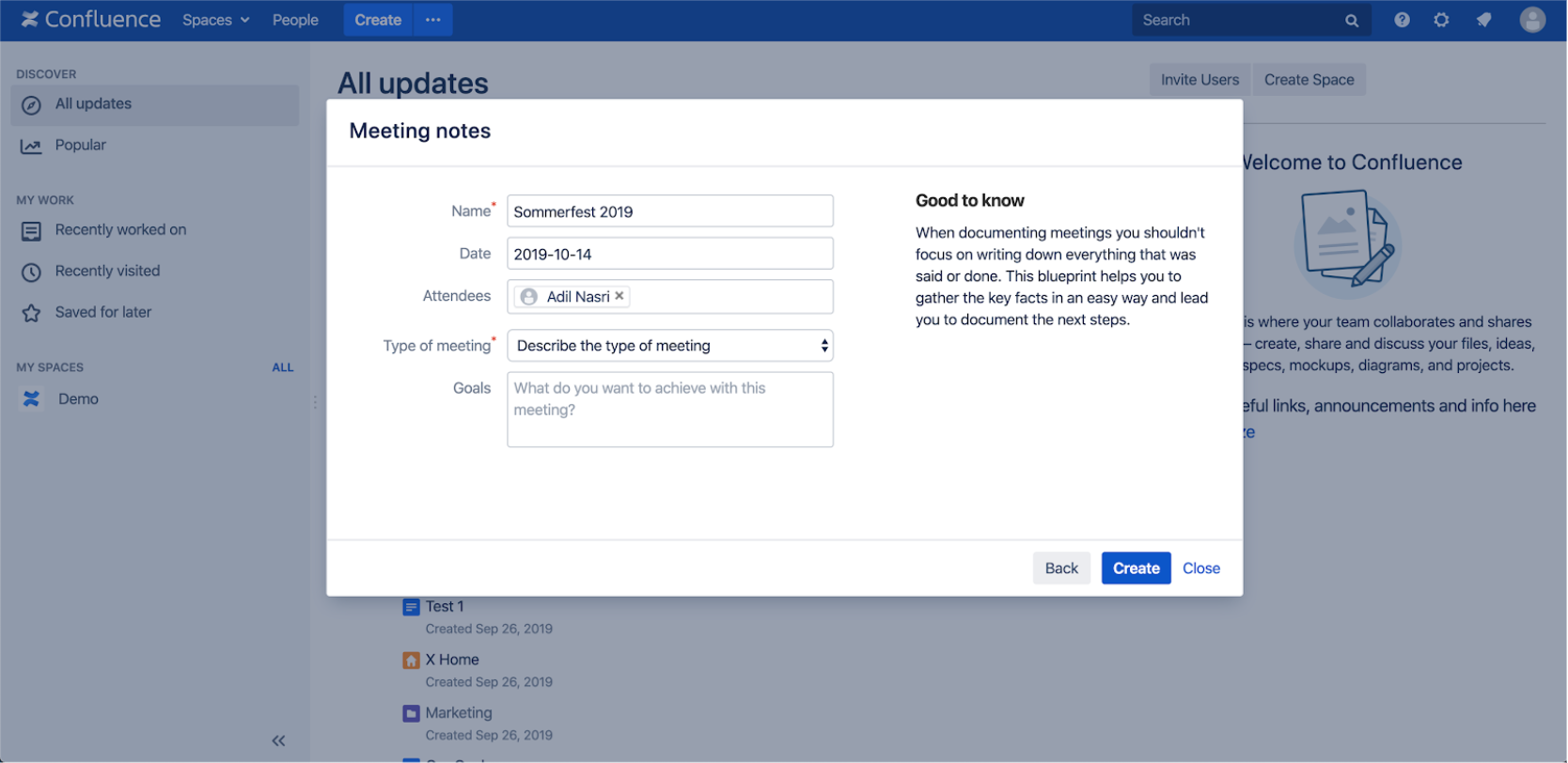Sharing and documenting knowledge directly benefits an organization by improving its efficiency, particularly in terms of its time and quality management. Wiki systems such as Confluence are so effective because they are perfectly suited for this task. Content can be created by different users and edited by other users.
You can use templates and blueprints to create pages, saving time and making sure that you establish a uniform structure to your pages.
What are Templates and Blueprints?
Basically, templates are pages but with predefined content. This means that your area administrator can create templates using the standard Confluence editor, and then they can make those templates available to your team. You can also use rudimentary variables, which are brought up for consideration when creating a new page in the "template assistant."
Blueprints are even more powerful than templates. Atlassian introduced blueprints to Confluence about six years ago. Blueprints may be based on templates, and so they may appear to be similar in some ways, but overall they have a lot more functionality. As a result, they greatly simplify the page creation process.
You can set up blueprints so that, for example, page titles can automatically receive a prefix. You can also create dynamic overview pages for each area. You can also use more variables from different fields types. When you use templates you need to do so from a Wizard-style user interface. Blueprints, on the other hand, are displayed more intuitively from the "Create" menu item via a form.
Unlike templates, however, programming skills (Velocity and Java) are required for working with blueprints.
Templates and blueprints in direct comparison
Advantages and disadvantages of templates:
Advantages |
Disadvantages |
| (Area) administrators can create templates directly in the system. | Template Wizard isn't intuitive; it doesn't look like it's from the same software. |
| Changes can be made quickly. | Variables are only rudimentarily supported and aren't very helpful. |
| Only pages are supported. | |
| There is only one default icon for all templates. |
Advantages and disadvantages of blueprints:
Advantages |
Disadvantages |
| It has a much better user interface, made possible by having variables which are controlled via an intuitive input form. | Blueprints must be programmed with Velocity and Java. |
| It has more field type support for variables (user mentions, keywords, etc.). | Blueprints can only be installed by the Confluence administrator on a global level. |
| It has predefined settings for page titles (prefix, variable support). | Changes (e.g. new variables, error correction) must always be made directly in the programming code. |
| Automatic creation of overview pages. | |
| Icons can be selected individually. | |
| Supports additional content types such as blog entries or sections. |
Blueprint Creator - the perfect fusion
Blueprints may allow fast, user-friendly, structured and dynamic data acquisition, and in this respect they are a step ahead of templates: why then, are templates used more frequently? It's because programming knowledge is a big enough hurdle for users that they end up missing out on many of blueprints' strengths, using coding-free templates instead.
Blueprint Creator now brings you all the strengths of blueprints with none of the hurdles that come from having an exclusively coding interface. With this app you can integrate the functions of blueprints into templates, all without any programming knowledge. Thanks to Blueprint Creator, now you can have the advantages of both blueprints and templates. You can also create blueprints for areas and blog entries.
Lesen Sie diese Seite auf Deutsch
Further Information
Top ten apps for Confluence that help your organization
Atlassian apps and use case library
Purchasing Atlassian licenses with //SEIBERT/MEDIA - Your advantages
Linchpin: A modern social intranet based on Confluence




